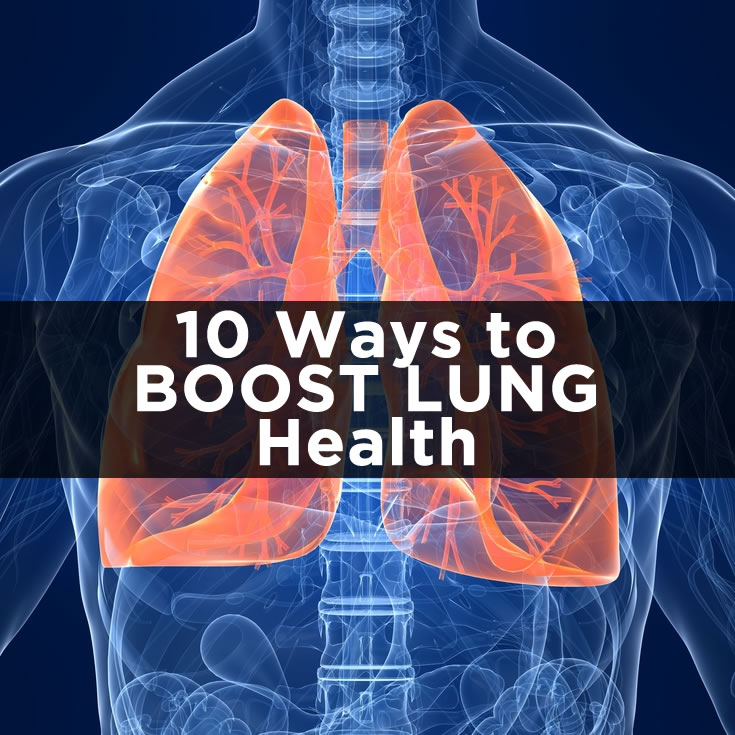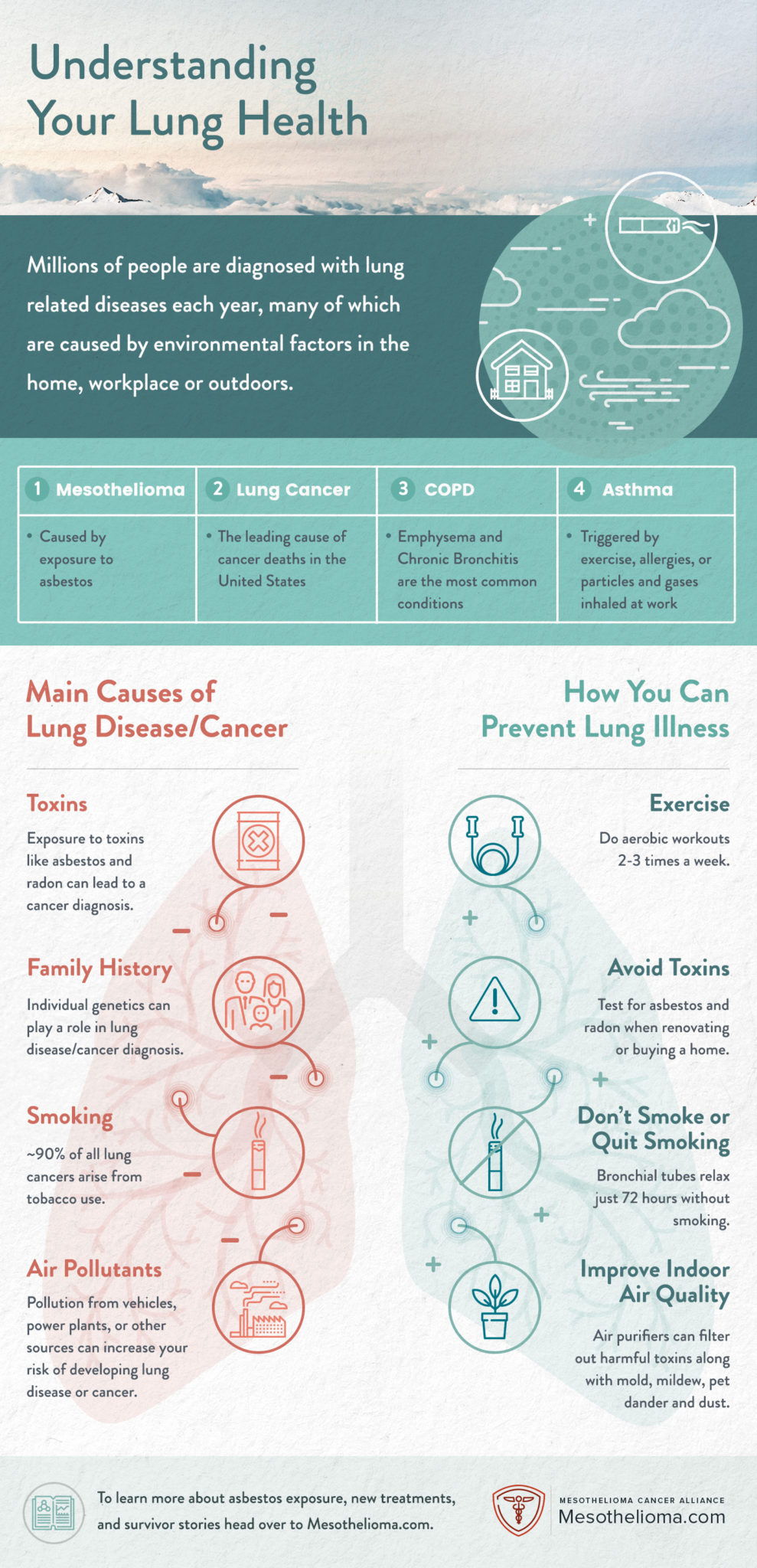According to the ALA ( American Lung Association ), COPD – also known as Chronic Obstructive Pulmonary Disease – is the 3rd major cause of death in the US after cancer, stroke, and heart disease. Like Heart Disease and Cancer, COPD is more of a silent killer than a ravaging one. In fact, most people with COPD rarely exhibit any noticeable symptoms until they hit their late 40s or early 50s. After this, they start to experience an increased difficulty in breathing coupled with shortness of breath, chest tightness, wheezing and a chronic cough ( with sputum ) that persists for months. Other general symptoms that accompany a COPD development include gradual weight loss, general fatigue and swollen joint especially ankles that result from a build-up of fluid – also known as Oedema.
That said, you will be pleased to know that COPD can be treated naturally and even prevented if you adhere to a few simple rules. Most, if not all of these, revolve around boosting one's lungs health which is really the genesis of most COPD cases.
Here's how to do it:
1. Avoid Smoking and Frequenting Spaces Where Smokers Hang Out
Smoking is literally one of the worst activities that you can do to inflict lung damage. And contrary to what most smokers believe, there is no safe/healthy threshold as far as smoking goes. All smokers are at equal risk of developing lung cancers or COPD regardless of how frequently they hit the blunt. However, this is not to say that chain smokers are better than those who only smoke occasionally. If anything, the more you hold the “cancer-sticks” between your lips, the greater the risk of COPD that you dispose yourself to. Not to mention chronic bronchitis and emphysema.
2. Train on Breathing
Deeply breathing in, holding it for a few seconds and exhaling out ( at least 10 times ) on a regular basis is an excellent way of ‘maxing out' the oxygenation of your blood flow. The exercise is simple but highly effective especially to those with troubled lungs. In fact, do this for 4 to 5 minutes every day and you will notice how less congested your lungs can be.
3. Improve Your Diet – Consume Fish, Citrus, and Fruits
There is substantial medical evidence that foods rich in antioxidants such as citrus and most fruits and vegetables are good for the health of your lungs. Fish, on the other hand, are laden with omega-3 proteins that are believed to boost lung function by reducing blockage of its airways and, most importantly, slowing down the inflammation festering in the lungs.
4. Improve Your Water Intake
Water is really the holy grail when it comes to boosting and improving overall health and fitness levels of a person. Similarly, the narrative does not change when it comes to keeping COPD at bay. Drinking at least two quarts of water daily helps keep your lungs clean and airways clear by lessening the chances of sputum/mucus build up. Which, of course, translates keeping lung inflammations at bay.
5. Regular Exercise – Boost Your Cardiorespiratory Fitness
While exercise by itself can not make your lungs any healthier especially if you have already done some irreversible damage to them in the past, it can help you get more out them. This means that the better or more responsive your cardiorespiratory fitness is, the easier it is for those lungs to keep your bloodstream supplied with plentiful oxygen. So if you are battling COPD at the moment, remember that regular cardio or general exercise, at the least, is very vital. Your weakened lungs need as much help as they can get at the moment.
6. Adopt the Use of Essential Oils Such as Peppermint and Eucalyptus
Few people know that essential oils can be extremely beneficial to one's lung health. Eucalyptus oils, for instance, which is one of the most common essential oils that can be easily obtained, is a potent antiseptic. It is not only useful as a decongestant and expectorant but also as one of the main ingredients of lung-healing concoctions. Peppermint, on the other spectrum, makes a very effective herbal inhalation solution for clearing up and strengthening one's ailing lungs.
7. Use N-Acetylcysteine which Helps Detoxify your Body
N-Acetylcysteine, also known as NAC, has numerous benefits. But one of the most significant ones is its potent antioxidant properties that are vital for proper lung functions. Its ability to aid the body in increasing the production glutathione naturally has helped most lung cancer and COPD patients battle their ailments more effectively as well as live longer than projected.
That aside, there is evidence that NAC helps detoxify the body – something that improves overall circulation of oxygen to various parts of the body.
8. Avoid Crowded Areas
This is easily said and done but it is no less as important. Crowded public places such as malls, airports, stadiums tend to be a healthy ground for the spread of communicable lung infections such as tuberculosis and transfer of germs from one person to another. If you are diagnosed with COPD or a similar lung ailment, then you are at a higher risk of developing acute exacerbation and COPD flare-ups than can be triggered by frequenting public places.
9. Avoid Unnecessary Stress
Most people don't realize this but stress and sudden anxiety can trigger hyperventilation even to a person with a healthy pair of lungs. And if this becomes the norm – maybe due to the nature of one's profession or other factors – the individual becomes more predisposed to developing COPD at a later stage in life. The bottom line here is that if your lifestyle or job is characterized by moments of acute stress, it is problem time you did something about it before it morphs into something serious.
10. Avoid Chemicals and Pollution
Long-term exposure to either indoor or outdoor pollution is a leading cause of COPD. Fortunately, though, it is easier to mitigate this by avoiding smoggy areas of your town such as industrial areas and construction zones. At the same time, strive to keep your car and home smoke-free as a way of reducing chances of being exposed to second-hand smoke.
Additionally, few people are aware that asbestos toxicity is still a major cause for mesothelioma and COPD. People who have asbestosis, a lung disease caused by asbestos, may develop COPD as a complication. Asbestos is also a known cause of pleural mesothelioma, a cancer that affects the lining of the lungs, and it is not uncommon for mesothelioma patients to also have COPD.
COPD Symptoms Takeaways
- COPD is the third leading cause of death in the U.S. More than 11 million people in the U.S. are diagnosed with COPD, while an estimated 24 million may have the disease without even realizing it.
- COPD symptoms include shortness of breath while doing everyday activities or during physical activities, chronic cough, wheezing, chest tightness, frequent respiratory infections, blueness of the lips or fingernail beds, general fatigue and lack of energy, producing a lot of mucus or phlegm, having to clear your throat first thing in the morning due to excess mucus in your lungs and unintended weight loss (in later stages). People with COPD are likely to experience episodes called exacerbations. This is when symptoms become worse than usual and persist for at least several days.
- The root causes and risk factors for COPD include smoking, tobacco smoke exposure, having asthma and smoking, occupational exposure to chemicals and dusts, age, and genetics. In addition, deaths resulting from COPD are higher in women than in men.




